I noticed several Miniature Fairy Gardens while visiting my favorite garden store and fell in love with the idea.
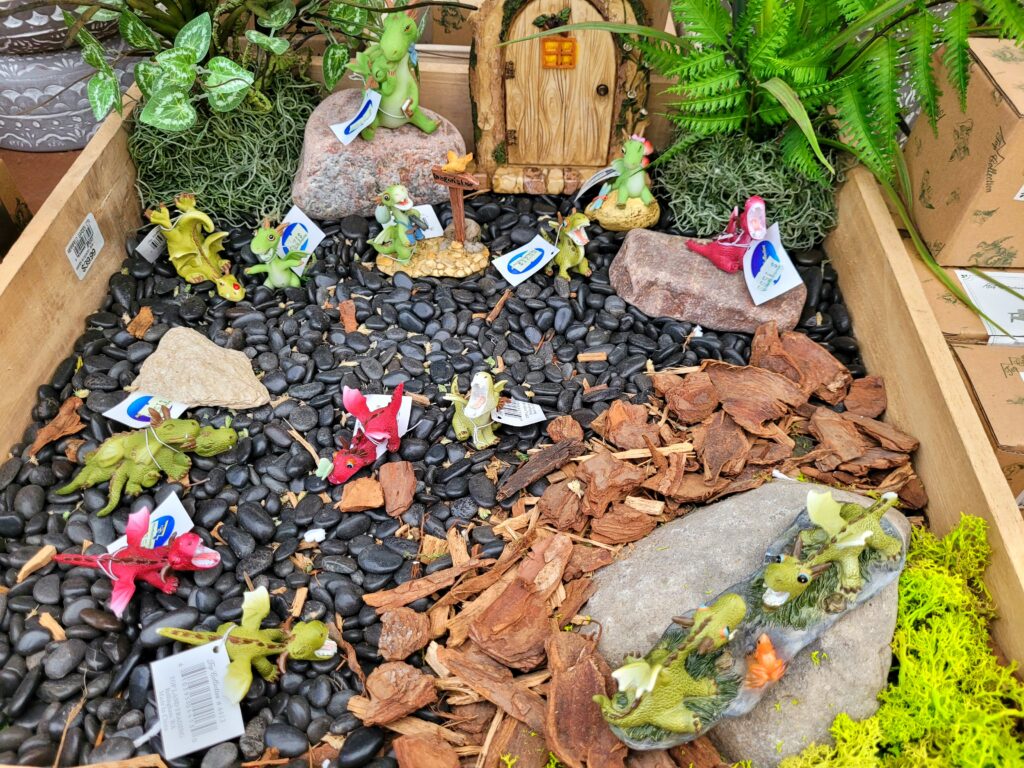
What is a Fairy Garden?
I next did some online research on this topic.
This type of “garden” is pretty much a do-it-yourself project requiring very little or no care. Miniature fairy gardens are great for people with no land, garden or patio to grow plants. They are, also, for people who do not like to work with plants yet want a little green enchanted space in their homes.
To begin a fairy garden, you need a wooden box or other container. You can also stack your boxes for a different look.
Fairy gardens require no plants and are made of natural materials such as mulch, rocks, small stones, sand, and preserved moss. With no live plants, drainage is not an issue.
Miniature fairy gardens are a great activity for children to complete and maintain. You can either make or purchase miniature items for the garden such as benches, fairy houses, fences, doors, or fairy figurines.
They get their name from the idea that they will “attract” fairies to the mini gardens but, of course, this is a fictional notion rather than fact.
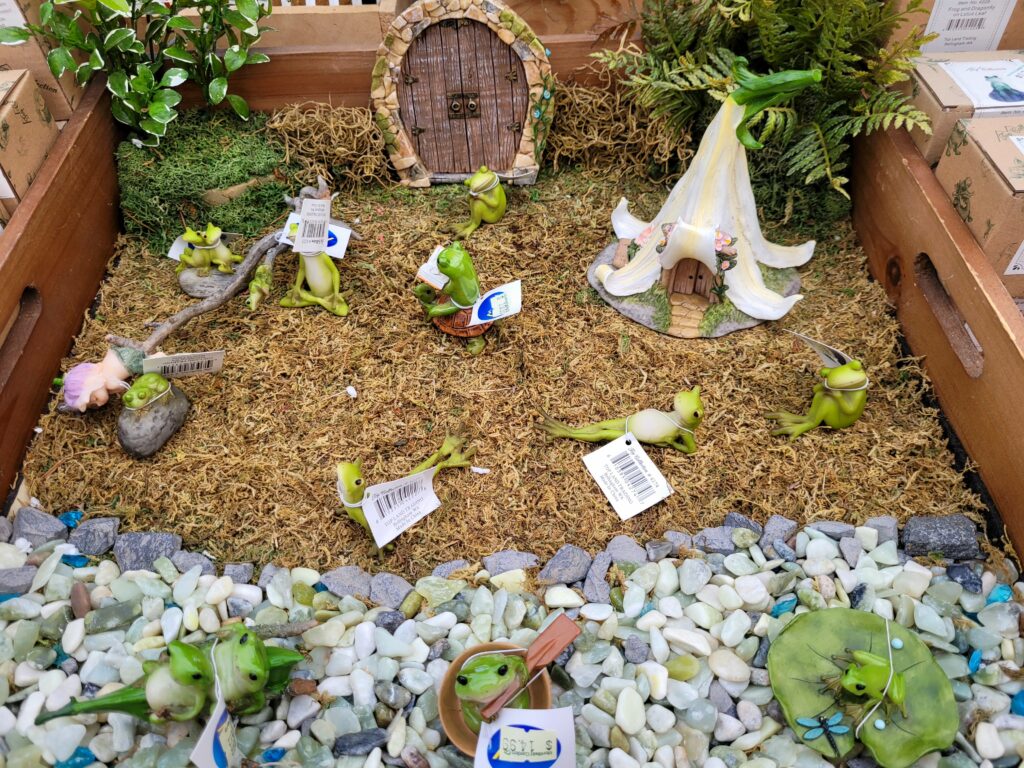
Brief History of Miniature Gardens
Fairy Gardens are a relaxing and creative way to make small gardens.
Miniature gardens were featured in the World’s Fair in the US back in the 1890’s.
However, Ann Ashberry of Hackney, England was well-known for her miniature gardens. In 1935, she was living in an apartment in London without a garden but she had window boxes.
Using those window boxes and dwarfs plants she made miniature gardens. Ashberry then turned her hobby into a business. She, also, added mini buildings, ponds, trellises, and small “wildlife” to her miniature gardens.
Ashberry’s miniature gardens were exhibited at country fairs. She, also, wrote articles and books on the subject. She passed away in 1990 at her home.
How to Build a Whimsical Fairy Garden
First find or purchase a wooden container. I noticed online that some people even use old dresser drawers to make their gardens in.
Then fill the container part-way with garden soil but leave room to arrange your “top” layer.
After that, add mulch, stones, rocks, and moss to make your landscape.
When you are happy with your efforts, then place your whimsical features such as fairy figurines, gnomes, twigs, secret doors, fences or other items.
Remember if you add any miniature real plants, you need some type of drainage and sunlight to keep plants healthy.
Also, it is difficult to water this type of garden and not disturb the miniature decorative features.
Types of Moss Used in Fairy Garden
I want to blog a little bit about the preserved moss features of these mini gardens since they give a bit of green to miniature gardens. Live moss is generally not used for this project since it can rot.
There are basically three types of preserved moss you can use for this project.
- Reindeer Moss – This type of moss comes in a variety of colors. Reindeer moss was an actual living moss native to artic landscape from the Iceland and Norway areas.
- Cushion Moss – Looks like little pads or cushions of green moss.
- Sheet Moss – Covers large areas and comes in flat sheets.
All the above types of mosses work equally well and it only depends on what look you are trying to produce.
Preserved moss is also often dyed with a dye similar to food coloring so if it gets wet, the color could bled onto other objects.
.
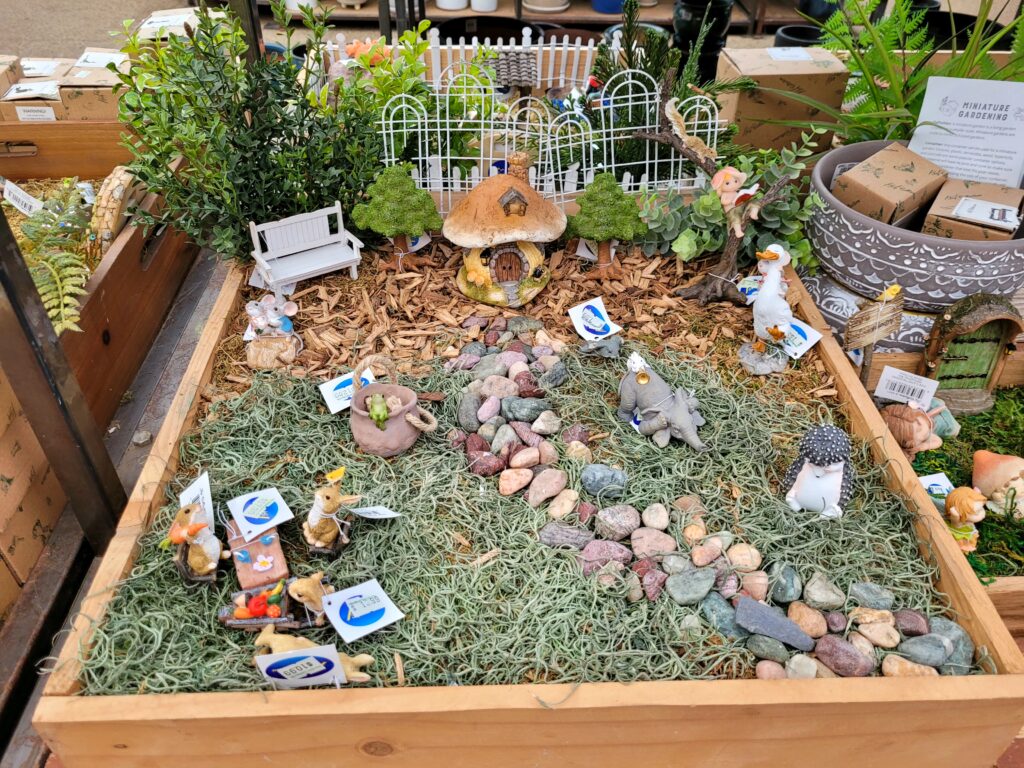
Ending Notes on Miniature Fairy Gardens
The miniature gardens in this blog are on display by Merrifield Garden Center.
The wooden base, all supplies, and figurines are available for purchase at their store. Wooden boxes photographed on this blog are priced at $39.99 and some have handle cut-out for easy carrying of the boxes. They also sell mini fairy lights which I believe works on small batteries.
Figurines and other features are priced separately. You can add a few or many figurines depending on your preference.
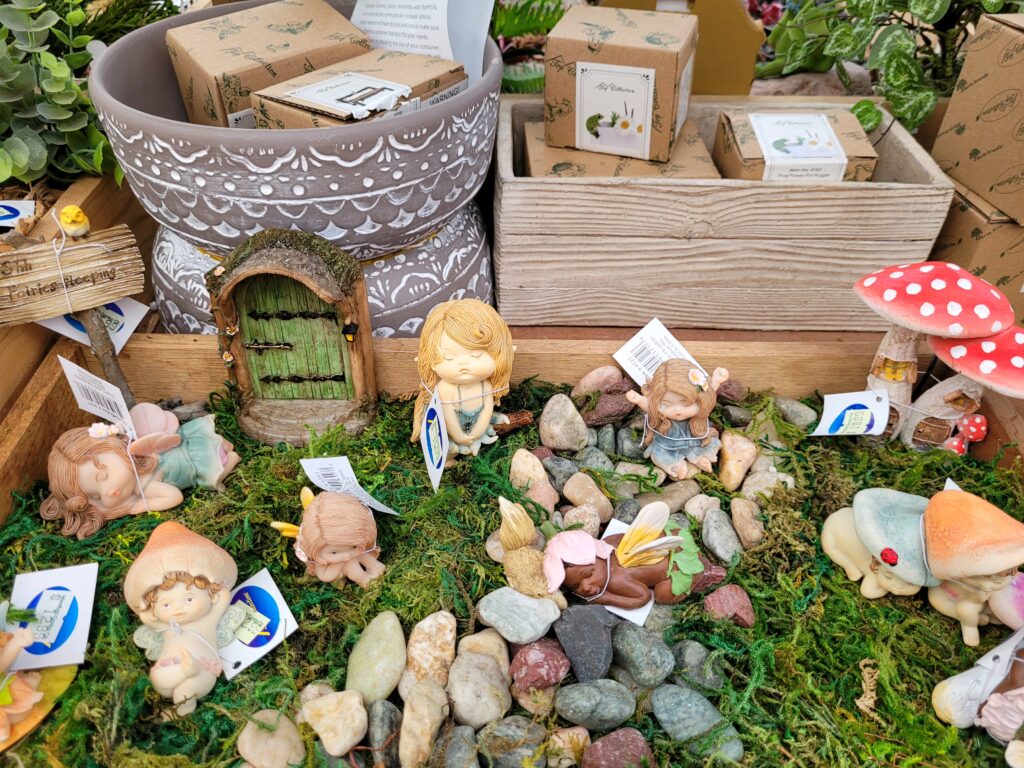
A Special Thank You to Merrifield Garden Center for allowing me to blog and take photographs at their store.
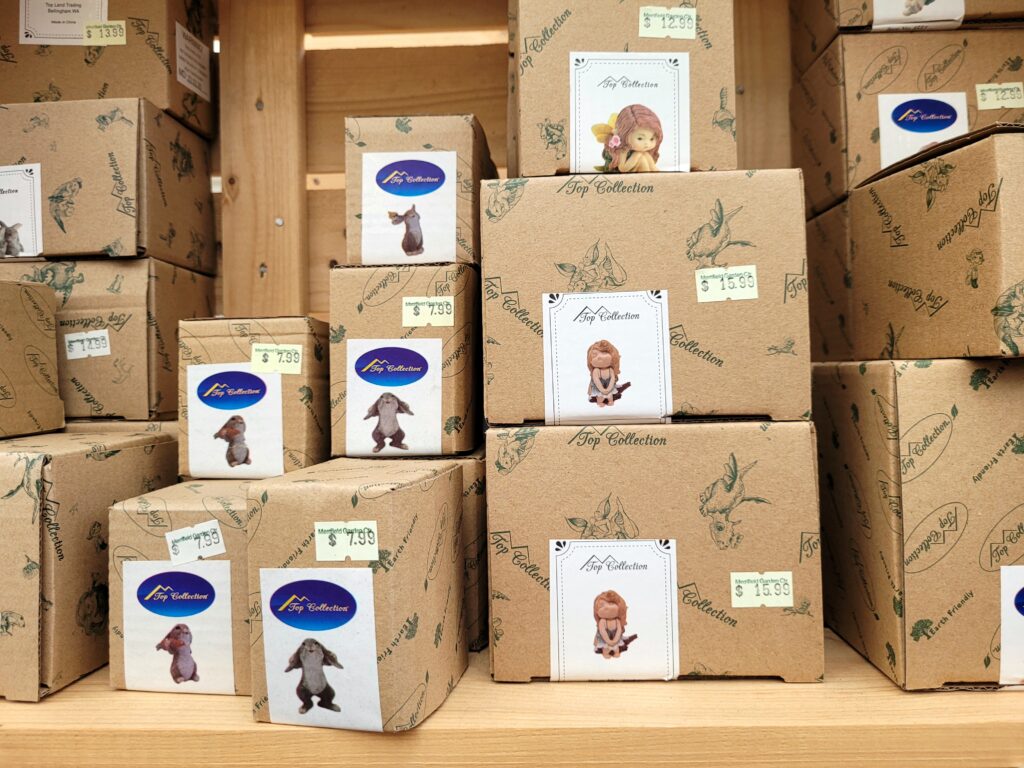
Resource Sites: Wikipedia, terriumtribe.com, and the gardens.trust.blog

